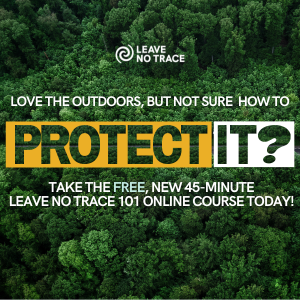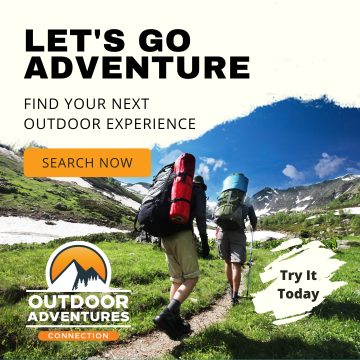
Camping offers a chance to connect with nature, but it comes with the responsibility to minimize your impact on the environment. Whether you’re a seasoned adventurer or a first-time camper, understanding how to set up a campsite properly and adhere to Leave No Trace principles is essential for preserving outdoor spaces for future generations.
This article explores the key steps for setting up a safe and efficient campsite and outlines the seven Leave No Trace principles to help you reduce your environmental footprint.
Campsite Setup: Finding the Right Spot
Choosing the right campsite is the foundation of a successful camping trip. Here are the steps to follow:
1. Select a Durable Surface
When camping, always set up your tent on durable surfaces such as packed dirt, gravel, or dry grass. Avoid fragile ecosystems like meadows, wetlands, or areas with sensitive vegetation, as trampling these areas can cause long-term damage.
- Backcountry Camping: Stay at least 200 feet away from water sources, such as lakes and streams, to protect riparian habitats.
- Established Campgrounds: Use designated campsites whenever possible, as they are designed to handle human activity.
2. Assess Wind and Sun Exposure
Set up your tent in an area with natural windbreaks, such as rocks or trees, to shield you from strong gusts. Consider the sun’s position during the day to avoid camping in a spot that may become uncomfortably hot or too exposed.
3. Check for Hazards
Before pitching your tent, scan the area for potential hazards like falling branches, loose rocks, or animal trails. Never camp directly under trees with dead branches, as they can fall unexpectedly, especially in windy conditions.
4. Plan for Cooking and Fire Safety
Establish a cooking area at least 100 feet from your tent to avoid attracting wildlife. If fires are permitted, use existing fire rings or designated areas, and keep fires small and controlled. In fire-prone regions, opt for a portable camp stove instead of an open fire.
Setting Up Your Campsite
Once you’ve chosen the right spot, setting up your campsite efficiently is the next step.
1. Tent Setup
- Lay a ground tarp under your tent to protect it from moisture and sharp objects. Ensure the tarp is smaller than the tent’s footprint to prevent water from pooling underneath.
- Secure your tent with stakes and guy lines to keep it stable, especially in windy conditions.
2. Sleeping Area
- Use a sleeping pad or inflatable mattress for insulation and comfort.
- Keep your sleeping bag clean by changing into dedicated sleepwear before climbing in.
3. Cooking and Eating Area
- Set up a cooking station on a flat, stable surface. Avoid cooking inside your tent, as it’s a fire hazard and can attract animals.
- Store food in bear-proof containers or hang it from a tree at least 10 feet off the ground and 4 feet from the trunk.
4. Hygiene and Waste Management
- Designate a latrine area at least 200 feet from water sources and your campsite. Dig a cathole 6-8 inches deep for human waste, and pack out toilet paper and hygiene products in a sealed bag.
- Use biodegradable soap sparingly and wash dishes at least 200 feet from water sources.
Leave No Trace Principles
The Leave No Trace principles are a set of guidelines designed to protect the environment and minimize human impact. Here’s how to apply each principle:
1. Plan Ahead and Prepare
Research the area you’ll be visiting, including regulations, weather conditions, and any hazards. Being prepared reduces the likelihood of making mistakes that harm the environment.
2. Travel and Camp on Durable Surfaces
Stick to established trails and campsites to avoid damaging vegetation. In the backcountry, choose durable surfaces like rock, gravel, or dry grass.
3. Dispose of Waste Properly
“Pack it in, pack it out” is a core principle of Leave No Trace. Carry out all trash, leftover food, and hygiene products. Properly bury human waste or use designated facilities.
4. Leave What You Find
Preserve the natural environment by leaving rocks, plants, and cultural artifacts as you find them. Avoid carving into trees or marking rocks.
5. Minimize Campfire Impact
Fires can cause lasting damage, so use a camp stove for cooking when possible. If fires are allowed, use existing fire rings and burn only small sticks that can be fully consumed. Make sure your fire is completely extinguished before leaving.
6. Respect Wildlife
Observe animals from a distance and never feed them, as this can disrupt their natural behaviors and make them dependent on humans. Store food securely to avoid attracting wildlife to your campsite.
7. Be Considerate of Other Visitors
Respect the solitude of others by keeping noise levels down and yielding the trail to uphill hikers. Leave campsites better than you found them, so others can enjoy the experience.
Tips for Sustainable Camping
- Pack Light: Bring only what you need to reduce waste and minimize your environmental impact.
- Reusable Gear: Use reusable items like water bottles, utensils, and food containers instead of disposables.
- Eco-Friendly Products: Opt for biodegradable soap, sunscreen, and insect repellent to avoid polluting the environment.
- Local Resources: Support conservation efforts by using local outfitters and paying park fees that fund preservation projects.
Conclusion
Mastering campsite setup and adhering to Leave No Trace principles ensures that your camping experience is safe, enjoyable, and environmentally responsible. These skills not only protect the landscapes you explore but also allow future generations to enjoy the same natural beauty.
Whether you’re pitching a tent in a developed campground or venturing deep into the wilderness, these practices will help you minimize your impact and make your outdoor adventures more sustainable.
For more tips on outdoor skills, camping gear recommendations, and trip planning resources, visit the Outdoor Adventures Connection website at www.outdooradventures.pro.

.png)

-(2).png)


.png)


.png)





-(1140-×-106-px).png)
.jpg)
Leave Comment Below